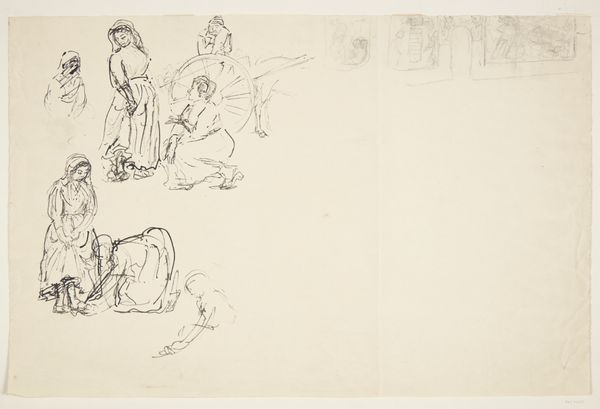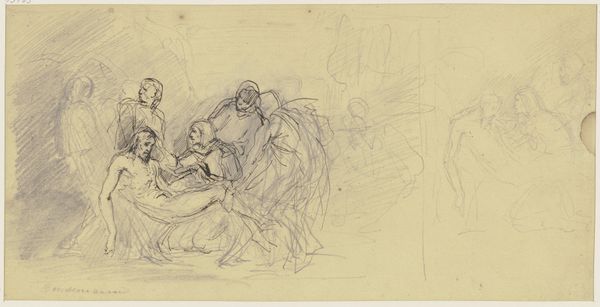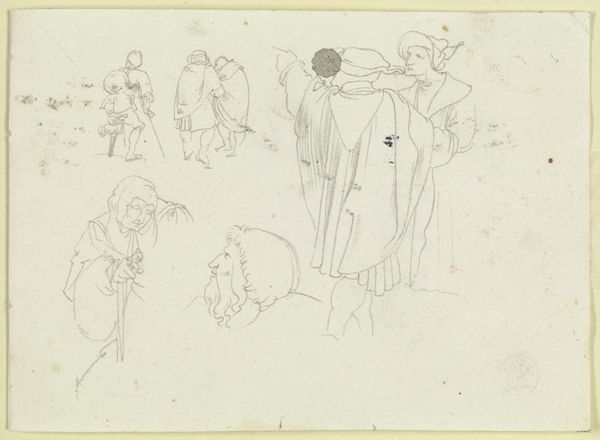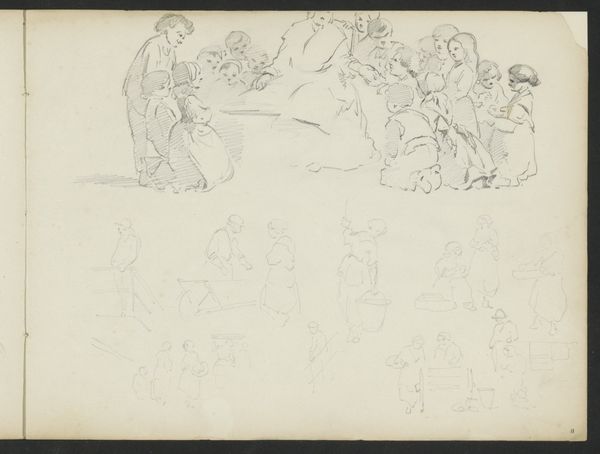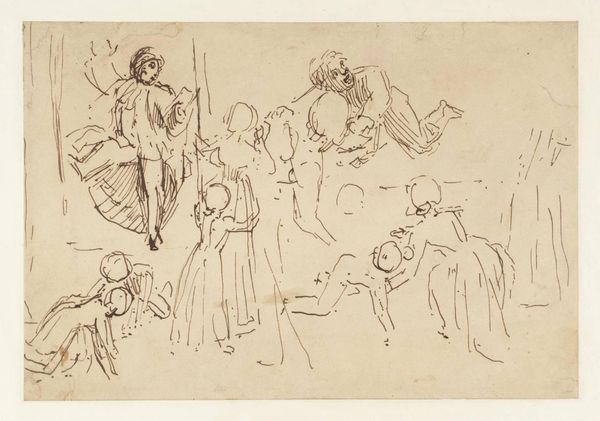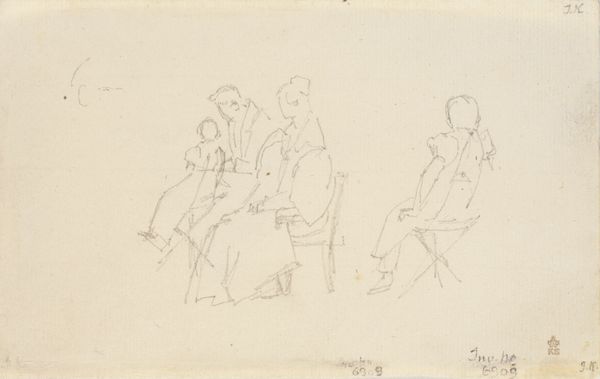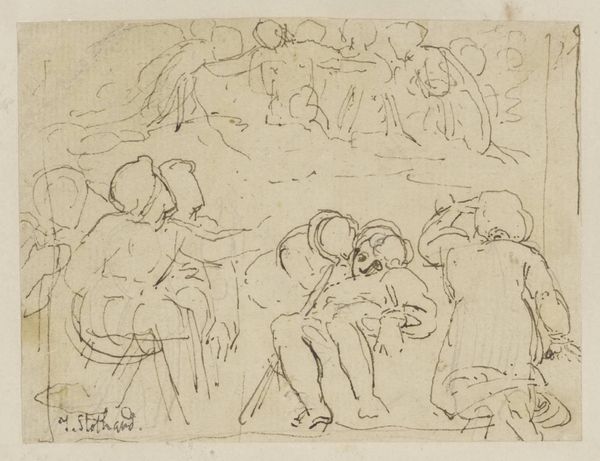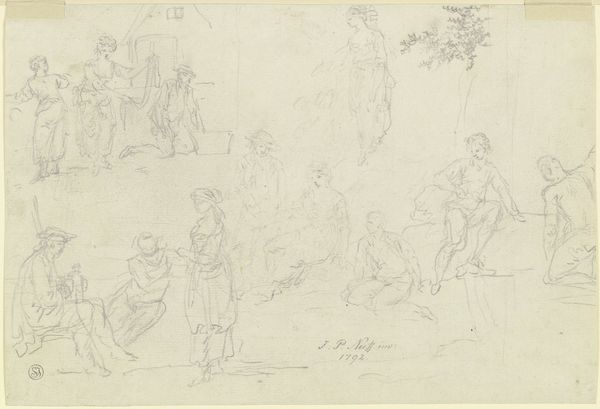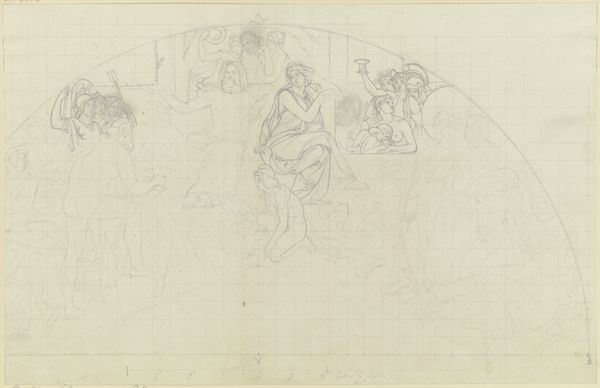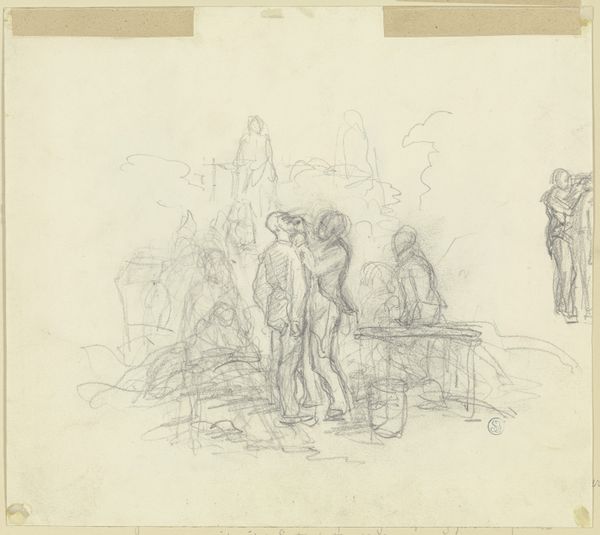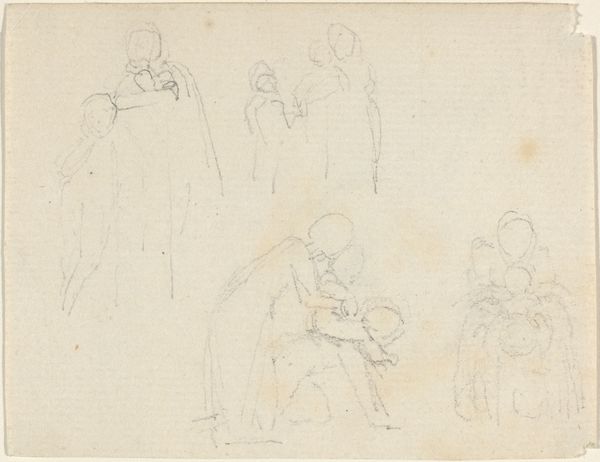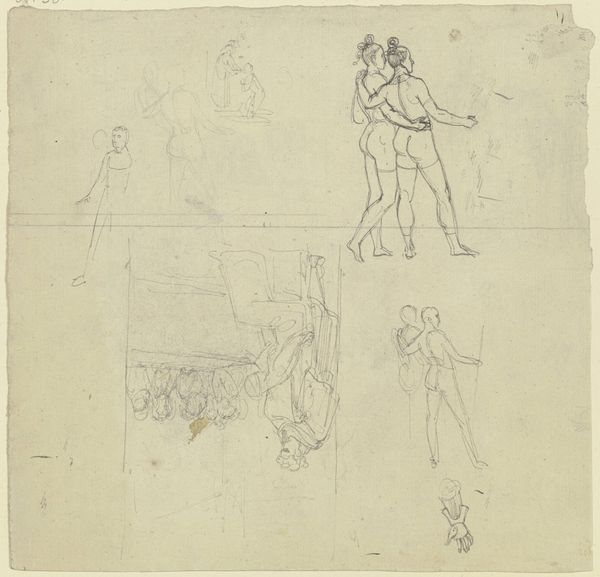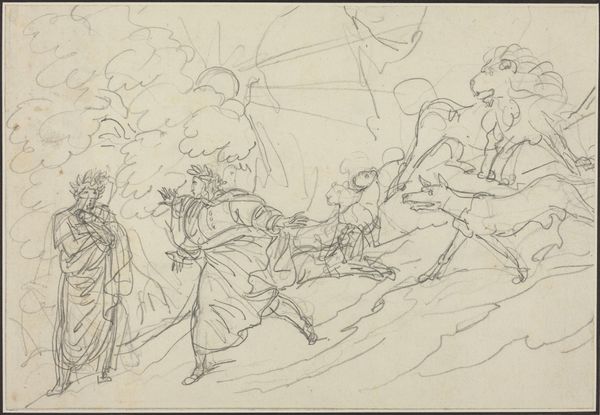
Studienblatt_ Frauen bei der Handarbeit, ein sitzender männlicher Akt sowie weitere Figuren
0:00
0:00
drawing, ink, pencil
#
portrait
#
drawing
#
16_19th-century
#
figuration
#
ink
#
pencil
#
academic-art
#
nude
Copyright: Public Domain
Curator: This sheet of studies, crafted with pencil and ink, appears light and airy, almost ephemeral, don’t you think? Editor: Absolutely. It gives me a sense of peering into the artist's mind, catching glimpses of thoughts and forms as they emerge. There's a vulnerability to it, an immediacy that is quite compelling. Let's delve into the circumstances surrounding it. This is entitled "Studienblatt: Frauen bei der Handarbeit, ein sitzender männlicher Akt sowie weitere Figuren", which translates to "Study Sheet: Women doing Needlework, a Seated Male Nude as well as further figures." Curator: The combination of domestic labor alongside the nude male form really strikes me. It points towards a fascinating tension of societal expectations imposed on women. Their representation in art, historically linked to domesticity versus a perceived 'free' masculine intellect that grants license to occupy more visible public spheres. Do you see that play of power relations in the imagery? Editor: Certainly. The "study sheet" in and of itself becomes quite fascinating from an institutional history perspective. Who commissions these works? How do academies and ateliers mediate social roles of the artists and the portrayed? I’d say it underscores how artistic training was deeply interwoven with the prevailing ideologies of gender and class. These gender dynamics, these acts of observing, selecting, and sketching these women could represent control dynamics as much as attempts at honest depiction. Curator: Precisely, and it prompts a further investigation. By placing the male nude adjacent to women engaged in “Handarbeit,” the piece implicitly asks if there are constraints being imposed on the artistic practice itself. In our interpretation, what does Naeke, a male artist in the 19th century, tell us by this association about artistic practice? Or could these compositions instead depict a desire to broaden that definition, a yearning for something outside traditional roles? Editor: Indeed, and beyond its value for today, pieces like this, archived as they are within the collection of Städel Museum, grant modern visitors access into artistic communities, their modes of instruction, as well as a wider social milieu. Its presence makes a claim about history. Curator: Thinking about this work, and its figures as records of power, art has an instrumental value for understanding what women have endured across the centuries. Editor: A poignant reminder that these studies, while seemingly simple, reflect layers of historical context and influence.
Comments
No comments
Be the first to comment and join the conversation on the ultimate creative platform.
